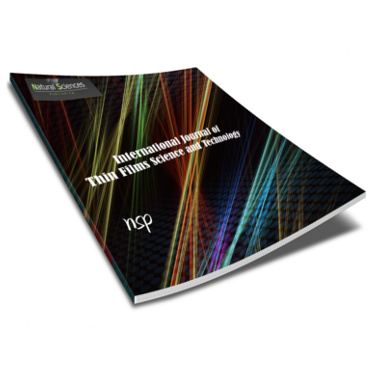International Journal of Thin Film Science and Technology

Abstract
Semiconductor and semiconductor manufacturing devices have been the fundamental basis of progress for several decades in each industry and nations scientific and technological growth. Thin films are promising materials for optoelectronic device applications. Thin films could be used for supercapacitors due to low cost, high power density, good specific capacitance, fast charging and discharging. Generally, supercapacitors are used in many applications requiring rapid charge and discharge cycles rather than long-term compact energy storage. Thin films solar cells such as amorphous silicon, cadmium telluride and copper indium gallium selenide are currently being developed worldwide. Because of these films rising power conversion efficiencies, minimum material usage, and lower production cost. In the recent years, there are several methods have been implemented, studied and tested in order to improve power conversion efficiency of solar cells. In this review, the main focus has been on materials such as thin films (metal telluride and metal sulfide) and discuss the up-to-date progress achieved in the field of supercapacitor. We expected that these materials are promising candidate for next generation energy-related applications. On the other hand, we also discuss recent thin film solar cells designs and how to improve the performance of solar cell as well. The photovoltaic parameters such as fill factor, open circuit voltage, short circuit current, and power conversion efficiency, were highlighted for the solar cell prepared under different conditions.
Recommended Citation
Paulraj, Immanuel and Kumar, Mohanraj
(2022)
"Metal Chalcogenide Thin Film based Solar Cells and Supercapacitor: A review,"
International Journal of Thin Film Science and Technology: Vol. 11
:
Iss.
1
, PP -.
Available at:
https://digitalcommons.aaru.edu.jo/ijtfst/vol11/iss1/7

